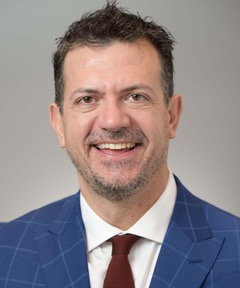New Perspectives in Periodontology and Implant Dentistry
A special issue of Dentistry Journal (ISSN 2304-6767). This special issue belongs to the section "Oral Hygiene, Periodontology and Peri-implant Diseases".
Deadline for manuscript submissions: closed (10 July 2024) | Viewed by 1315
Special Issue Editor
Interests: periodontology; implant dentistry; bone regeneration; soft tissue regeneration
Special Issues, Collections and Topics in MDPI journals
Special Issue Information
Dear Colleagues,
Scientific advances have made it possible to achieve highly predictable dental care. On the one hand, periodontal disease represents the sixth most widespread human disease, with approximately 35% of the world population affected by a form of periodontitis; it currently represents the main cause of the loss of dental elements. On the other hand, we know that the adequate control of inflammation associated with the achievement of excellent compliance by patients can stabilize the disease and allow the maintenance of teeth in the long term.
Similarly, osseointegrated implantology has extremely high success rates, so researchers can focus on the augmentation of hard tissues and soft tissues using tissue regeneration techniques specific to bone tissue and soft tissue augmentation techniques, with both autologous and heterologous grafts.
Prof. Dr. Daniele Cardaropoli
Guest Editor
Manuscript Submission Information
Manuscripts should be submitted online at www.mdpi.com by registering and logging in to this website. Once you are registered, click here to go to the submission form. Manuscripts can be submitted until the deadline. All submissions that pass pre-check are peer-reviewed. Accepted papers will be published continuously in the journal (as soon as accepted) and will be listed together on the special issue website. Research articles, review articles as well as short communications are invited. For planned papers, a title and short abstract (about 100 words) can be sent to the Editorial Office for announcement on this website.
Submitted manuscripts should not have been published previously, nor be under consideration for publication elsewhere (except conference proceedings papers). All manuscripts are thoroughly refereed through a single-blind peer-review process. A guide for authors and other relevant information for submission of manuscripts is available on the Instructions for Authors page. Dentistry Journal is an international peer-reviewed open access monthly journal published by MDPI.
Please visit the Instructions for Authors page before submitting a manuscript. The Article Processing Charge (APC) for publication in this open access journal is 2000 CHF (Swiss Francs). Submitted papers should be well formatted and use good English. Authors may use MDPI's English editing service prior to publication or during author revisions.
Keywords
- periodontal disease
- biomaterials
- soft tissue augmentation
- bone augmentation
- periodontal regeneration
- guided tissue regeneration
- alveolar ridge preservation
- immediate implant placement






